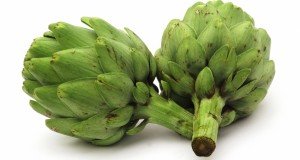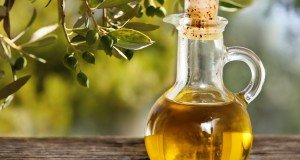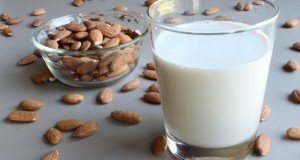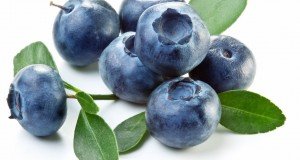Stevia extract fights Lyme disease pathogens BETTER than antibiotics, study reports
(NaturalHealth365) According to the U.S. Centers for Disease Control and Prevention (CDC), ‘over 300,000 people are stricken with Lyme disease every year in the United States.’ Yet, the CDC itself admits that Lyme disease is vastly ‘under-reported.’ We, at NaturalHealth365, just wish the mainstream media and government health agencies would focus its attention more on natural remedies, like the use of stevia over gloomy statistics and toxic drugs.
With early symptoms of headache, fever, skin rash and fatigue, Lyme disease can spread throughout the body and affect the brain, nervous system, heart and joints – with serious, even debilitating, consequences. But, recent research shows that the natural sweetener stevia may be more effective than commonly-used antibiotics – when it comes to combatting the pathogen behind Lyme disease.
Warning: Antibiotics may not fully eliminate Lyme disease
Lyme disease is carried by Ixodes ticks, which typically can infest mice and other rodents, as well as deer and birds. Unfortunately, these ticks aren’t averse to feeding on humans as well – with the bite of a single infected tick sufficient to transmit the infection.
Western medicine’s gold standard of treatment is a course of doxycycline for 2 to 4 weeks – a therapy recommended by the Infectious Disease Society of America. However, antibiotics may not completely eliminate the disease, and a relapse can occur when the drugs are discontinued.
In addition, up to 20 percent of Lyme patients can experience over six months of subsequent fatigue and joint pain, a condition known as “post-treatment Lyme disease syndrome” or “chronic Lyme disease.” Researchers believe that this may be due to the inability of the immune system to completely clear away “persisters” – pathogens that resist dying when exposed to antibiotics.
In reality, treating Lyme disease is truly a complicated matter due to the remarkably elusive abilities of Borrelia burgdorferi – the bacterial pathogen that causes health issues. In addition, researchers report that B. burgdorferi has “shape-shifting” abilities, and is capable of morphing into different forms, including spirochetes, spheroblasts and biofilms – as well as going into a form of suspended animation when conditions are unfavorable.
New study: Stevia outperforms conventional antibiotics
In a preclinical study conducted by researchers at the University of New Haven (UNH) and published in the European Journal of Microbiology and Immunology, the team compared the disease-fighting effects of stevia leaf extract to those of doxycycline, cefoperazone, daptomycin, and combinations of the three.
They found that stevia’s efficacy was comparable to the antibiotics – and in some ways, it surpassed them. When it came to disrupting biofilms – communities of the pathogen that feature a high percentage of “persisters” – the team rated stevia extract as “very effective,” noting it reduced attached Borrelia biofilm mass by a stunning 40 percent. (This was in contrast to the antibiotics, which actually caused the biofilms to increase in size!)
And, also in contrast to toxic antibiotics, stevia seems to have no adverse effects. The scientists also noted that stevia caused a “100 percent” elimination of the pathogens – with no viable regrowth after a week and only 10 percent viable regrowth after 14 days.
The team – which was led by Dr. Eva Sapi, Ph.D., a professor in the Department of Biology and Environmental Science at UNH – concluded stevia could be “considered an effective agent against B. burgdorferi,” and called for further study.
What makes stevia so potent against the Lyme disease pathogen?
Stevia owes much of its antibacterial powers to its pair of glycosides, steviol and stevioside. In fact, recent studies show that stevioside is antimicrobial against the food-borne pathogenic bacteria K. pneumoniae and P. aeruginosa. In other studies, stevia leaf extract was found to work against the pathogens that cause cholera and dysentery.
Stevia leaf also contains antioxidant flavonoids, such as quercetin and austroinulin, as well as the beneficial plant pigment beta-carotene. When it comes to its ability to break up biofilms, researchers believe this is due to stevia’s ability to act as a sugar derivative – which primes the uptake of phytochemicals responsible for its antibiotic effect.
With conventional antibiotics, the nutrition transport tubes in biofilms shut down, refusing entry. But with stevia, the transport tubes stay open, allowing the antibiotic components of the stevia to penetrate.
How can I use stevia against Lyme disease?
Although the studies on stevia are encouraging, using powdered stevia as a natural sweetener does not afford the same pathogen-fighting effects as found in the studies, which used an alcohol extract of the whole leaf.
For support against Lyme disease, some natural health experts recommend a liquid extract, such as the Nutramedix formulation used in the study. A typical dosage would consist of one drop twice a day, increasing a drop a day until you are using 5 drops twice daily.
Keep in mind: most natural health experts agree that Lyme disease requires the use of a multi-system, integrated treatment program – which includes immune modulators, hormonal therapies, anti-Lyme supplements and (sometimes) antibiotics for a short period of time.
So, if you have been diagnosed with Lyme disease, consult with an integrative physician who feels qualified to advise you on (safe) treatment options and, if you like, learn more at the Immune Defense Summit, hosted by Jonathan Landsman.
Sources for this article include:











